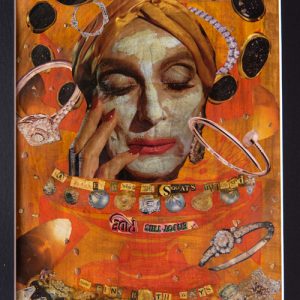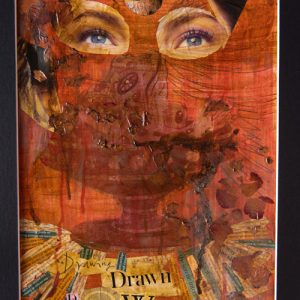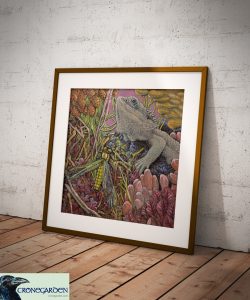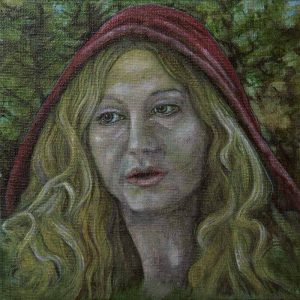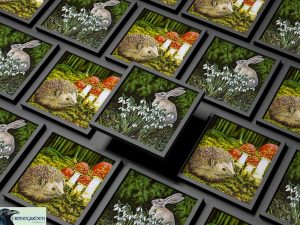Discover the awe-inspiring power of the ancient deity, Baal, and unravel the mysteries that surround his mythology.
Baal, a deity with ancient origins in the Middle East, has captivated the imaginations of scholars and enthusiasts alike for centuries. Revered by the Canaanites, Phoenicians, and other cultures, Baal was a multifaceted god associated with a range of phenomena including fertility, agriculture, and warfare. He was also associated with celestial powers and revered as a deity who could wield lightning bolts to control the weather and bring rain.
In her book, “The Canaanites,” Nadav Na’aman notes that the cult of Baal was centered on the worship of an anthropomorphic god, whose attributes were simultaneously those of a warrior and a sky god. The rituals of his worship involved the offering of sacrifices, including the sacrifice of young children, as well as the performance of various sacred rites. The deity’s cultic practices were shrouded in mystery and often involved elaborate ceremonies with mystical overtones. In the words of Michael Coogan, author of “The Old Testament: A Historical and Literary Introduction to the Hebrew Scriptures,” Baal was “a god of mystery, one whose ways were inscrutable and whose power was both awe-inspiring and terrifying.”
Despite his ambiguous and enigmatic nature, Baal represented for many ancient cultures a divine force of great importance. As a symbol of strength and vitality, he was revered as a protector of the people and the land. This idea is captured in the work of historian and scholar, Mark S. Smith, who notes that “the vitality of the land was often seen as depending on the protection of its deities, especially Baal.” In addition, Baal’s power over the elements and his association with fertility made him a symbol of prosperity and abundance, and his worship was often associated with the bounty of the harvest.
In more recent times, the symbolism of Baal has been reinterpreted and reapplied in a variety of ways. The deity’s association with the natural world has been explored in the works of scholars such as Bron Taylor, author of “Dark Green Religion: Nature Spirituality and the Planetary Future,” who argues that Baal represents a powerful force of nature and that the worship of nature deities can serve as a form of environmental activism. Similarly, the mythological figure has been reinterpreted in feminist literature as an embodiment of the divine masculine, representing the qualities of strength, leadership, and protection.
The enduring appeal of Baal can be traced back to the mystery and magic that surrounds him. Despite his ancient origins, the enigmatic nature of the deity continues to inspire contemporary art, literature, and culture. In the words of Miriam Robbins Dexter, author of “Whence the Goddesses: A Source Book,” Baal is “an emblem of the power of the divine in the natural world, a deity that encapsulates the sublime and the terrifying, the transcendent and the immanent.” Whether viewed as a historical curiosity or a contemporary source of inspiration, Baal’s mysterious and powerful persona continues to enchant and intrigue us to this day.
The Horned God Archetype and Baal’s Relevance in Contemporary Witchcraft.
Baal’s legacy has endured and his symbolism has been reinterpreted in various ways, including modern witchcraft. In contemporary pagan and Wiccan practices, Baal is often associated with the horned god archetype, which embodies masculine energy, power, and virility. This connection is based on similarities between Baal and other horned deities, such as the Celtic Cernunnos and the Greek god Pan.
The horned god is viewed as a symbol of the natural world and is often depicted with antlers or horns, representing the power and vitality of the natural world. As such, he is associated with the changing seasons, cycles of life and death, and the wildness of nature. In this context, Baal is seen as a manifestation of the horned god, representing the power of nature and its cycles.
Baal’s association with fertility and agriculture also makes him a potent symbol for contemporary witchcraft. His worship involved the offering of sacrifices to ensure a good harvest, and his power over the elements was thought to control the weather, ensuring the success of crops. This connection to the land and its cycles is reflected in modern Wiccan and pagan practices, which often emphasize the importance of living in harmony with nature and the cycles of the seasons.
In summary, Baal’s symbolism has been reinterpreted in modern witchcraft, where he is often associated with the horned god archetype and viewed as a representation of the power and vitality of the natural world. His connection to fertility and agriculture is also reflected in contemporary pagan practices that emphasize living in harmony with nature and its cycles.
Baal’s Consorts: Anat, Astarte, and Asherah and their Symbolism in Baal’s Mythology.
Baal’s mythology includes references to various consorts and goddesses associated with him. One such goddess is Anat, a fierce warrior goddess who was considered to be the sister of Baal. She was often depicted as a beautiful and powerful warrior, brandishing a spear and shield. The two deities were closely associated, with Anat serving as Baal’s protector and defender.
Another goddess associated with Baal was Astarte, a goddess of love and fertility. She was often depicted as a beautiful woman, often accompanied by lions and doves. Astarte’s mythology is complex, and she is sometimes associated with other goddesses such as Ishtar and Aphrodite. However, her connection to Baal is well-established, with the two deities often depicted together in ancient artwork.
Baal was also associated with the goddess Asherah, who was revered as the queen of heaven and the mother of all living things. In some traditions, she was considered to be the consort of Baal, and their relationship was believed to be essential for the fertility of the land. Asherah was often depicted as a tree, and her worship involved the planting of sacred groves and the offering of sacrifices to her.
The inclusion of various consorts and goddesses in Baal’s mythology reflects the complex and multifaceted nature of the deity. As a symbol of the natural world, Baal was associated with a range of phenomena, from fertility and agriculture to weather and celestial powers. The various goddesses associated with him were often seen as reflections of these aspects of his persona, embodying different aspects of the natural world and its cycles.
In modern times, the symbolism of Baal and his consorts has been reinterpreted and reapplied in various ways. The complex relationships between Baal and his consorts have been explored in feminist literature, where they are often seen as reflections of the divine masculine and feminine. In contemporary pagan and Wiccan practices, the consorts of Baal are sometimes viewed as manifestations of the goddess, representing different aspects of the natural world and the cycles of life and death.
Ancient Invocations To Baal
“Rise up, Baal, and hear: Judge, O son of Dagan, judge! Declare justice, O judge of the gods! The case of the weak, the cause of the poor, The case of the orphan, the cause of the widow, Plead their case, Uphold their cause, And carry out their judgment on the wicked! Let the guilty be found guilty, And let the just be declared just.”
This invocation is a plea for Baal to act as a just judge and protector of the weak and vulnerable. It has been translated from the Ugaritic language, which was spoken in the ancient city of Ugarit in modern-day Syria. This text was discovered on clay tablets in the ruins of the city and is believed to date from the second millennium BCE.
Another example of an ancient invocation to Baal can be found in the “Ba’al Cycle,” a collection of Ugaritic texts that tell the story of Baal’s rise to power and his battles with other deities. One of the texts, known as “The Song of the Plow,” includes an invocation to Baal as a god of fertility and agriculture:
“May Baal grant you abundant harvests, May he make your plowshare glide smoothly, May he bless your seed with fertility, May he make your threshing floor overflow with grain.”
This invocation emphasizes Baal’s role as a deity of the natural world, who has the power to bring fertility and abundance to the land. It was likely recited during agricultural festivals and ceremonies, as a way of invoking Baal’s blessings on the crops and ensuring a successful harvest.

